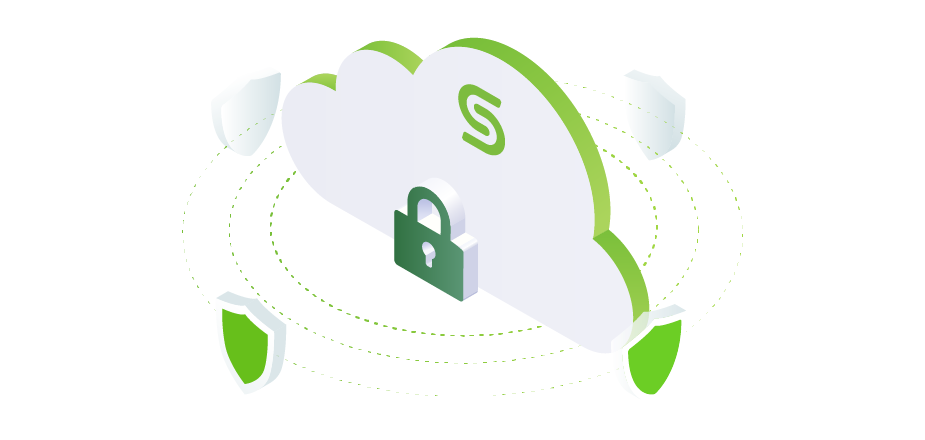The rapid growth of digital transformation has led businesses and organizations to increasingly adopt cloud computing, which offers scalability, flexibility, and cost savings. As organizations move their sensitive data to the cloud, they must address the growing concern of data security. Let’s examine the key strategies for organizations to enhance data security in the cloud—such as utilizing immutable files and objects for backup, enabling rapid recovery, ensuring visibility of data, supporting hybrid, multicloud and pure cloud environments, addressing multitenancy challenges, and embracing zero trust security concepts.
Data protection: An infrastructure for immutable backup and recovery at scale
Data protection is a crucial aspect of cloud security, and implementing an infrastructure for immutable backup and recovery at scale can significantly enhance an organization’s resilience against data loss, data corruption, and cyberattacks. This infrastructure includes:
- Immutable files and objects: Immutability means that these files cannot be maliciously or accidentally altered or deleted once they are created. Immutable files systems offer a foundation of security from insider threats, ransomware, and corruption focused attacks. Immutable files play a significant role in enabling rapid recovery, as they guarantee the existence of an unaltered copy of the data that can be easily restored.
- Encryption: It is vital to help defend against unauthorized access. Organizations should use the highest encryption grade possible and encryption if done while at rest and while in transit.
- Rapid recovery: The ability to rapidly recover data is essential for maintaining business continuity and mitigating the impact of data breaches, ransomware attacks, or other disasters. The ability to do mass recovery at scale is important for large enterprises, but you must retain the ability to do targeted, granular recovery when the situation calls for it.
Data security: cyber vaulting, intelligent threat detection, and machine learning
To enhance data security in the cloud, organizations should adopt cyber vaulting, intelligent threat detection techniques, and machine learning (ML) algorithms to identify potential threats. Cyber vaulting is a security approach that involves creating isolated, highly secure environments to store sensitive data—providing an additional layer of protection against cyberattacks.
Intelligent threat detection combines machine learning, artificial intelligence, and advanced analytics to identify and analyze potential security threats in near real-time. This can include:
- Machine learning for threat detection: ML algorithms can be employed to analyze vast amounts of data and identify patterns, anomalies, and potential threats that may otherwise go unnoticed. By continuously learning from new data, ML models can adapt to evolving threats and help organizations stay ahead of cyberattacks.
- Zero Trust principles: The zero trust security model assumes that any user or device, whether inside or outside the organization, cannot be trusted by default. By implementing a zero trust architecture, organizations can enforce strict access controls, authentication, and authorization mechanisms, reducing the attack surface and potential for data breaches.
- API-first architecture: An API-first approach allows organizations to integrate third-party security capabilities seamlessly. This enables the development of a holistic security solution that can adapt to evolving threats and the specific needs of an organization.
Data mobility: multicloud and hybrid cloud
Data mobility is essential for organizations operating in multicloud or hybrid cloud environments. It refers to the ability to move data safely and efficiently between different cloud providers, platforms, and infrastructures—including virtual machines, containers, databases, and file systems. Companies like Cohesity offer innovative solutions that help organizations achieve seamless data mobility and management across multicloud and hybrid cloud environments. To ensure data mobility, organizations should adopt the following practices:
- Unified data management: Implement a unified data management solution that consolidates data silos and provides a consistent, single-pane view across all cloud environments. This simplifies data mobility and helps organizations maintain control over their data, regardless of its location. For instance, the Cohesity Data Cloud consolidates data management tasks, making it easier for organizations to manage their data across different cloud environments.
- Data governance policies: Establish and enforce data governance policies that define data classification, storage, access, and transfer rules across different cloud environments. These policies will help maintain data security and compliance during the migration process.
- Hybrid and multicloud support: Adopt data management solutions that provide seamless support for hybrid and multicloud environments. These solutions should enable organizations to easily move and manage data across different cloud platforms and infrastructures without compromising security or performance.
- Data mesh: Implement a data mesh architecture that promotes decentralized data ownership, governance, and management across various domains and teams within the organization enabling true data mobility. A data mesh architecture also improves data access for applications, as it connects disparate data sources and provides a unified view of the data landscape. This increased visibility and accessibility make it easier for applications to retrieve and utilize the data they need, ultimately driving more informed decision-making and enhanced business outcomes.
- Data mobility for disaster recovery: Cloud adaptability can enhance both data mobility solutions and disaster recovery strategies. Data mobility enables an organization to access, replicate and move data across different cloud environments, while cloud provides multi-region scalable resilient infrastructure. The combination ensures that organizations can ensure business continuity and rapid recovery in the event of a disaster. The Cohesity Data Cloud allows organizations to replicate data across multiple locations, enabling effective disaster recovery planning.
By adopting these data mobility practices and leveraging solutions like those offered by Cohesity, organizations can achieve seamless and secure data management across multicloud and hybrid cloud environments. This facilitates efficient data migration, disaster recovery, and regulatory compliance, enabling businesses to fully realize the benefits of cloud computing while maintaining the necessary security and control over their valuable data assets.
Data access: intelligent file and object access
Ensuring secure and efficient data access is critical in cloud environments. Organizations should adopt intelligent file and object access methods to optimize storage usage and maintain data security.
- Role-based access control (RBAC): Implementing RBAC can help organizations define and enforce granular access permissions for users based on their roles and responsibilities. This helps prevent unauthorized access to sensitive data.
Data insight: global search, classification, and analytics
The ability to gain insights into your data is essential for organizations to use, manage and protect their data effectively. It involves employing capabilities like global search, classification, and analytics to gain better visibility and control over their data assets in the cloud.
- Global search: Organizations should implement global search capabilities to find and locate data across their entire cloud environment, including edge data. This helps ensure efficient data management and regulatory compliance.
- Data classification: By classifying and labeling data based on sensitivity and usage, organizations can apply appropriate security measures and access controls to protect their data assets. And when utilized as part of incident response, organizations can utilize real-time classification to have an accurate understanding of what sensitive data may have been compromised.
- Analytics and AI/ML: Utilizing artificial intelligence and machine learning technologies, organizations can analyze their data to generate actionable insights and detect potential security threats, enabling proactive security measures.
Simple, scalable, and secure data management
Embracing simple, scalable, and secure data management solutions, such as those provided by Cohesity, can greatly enhance data resilience and security in the cloud. These solutions offer several benefits:
- Simplicity: Intuitive interfaces and seamless integration with existing systems make it easy for organizations to manage their data, reducing the complexity often associated with data security and management.
- Scalability: Cloud-based services allow organizations to scale their storage and compute resources on-demand, ensuring that they always have the capacity to protect and recover their data efficiently.
- Security: By offering comprehensive security features, such as encryption, access controls, and advanced threat detection, simple and scalable data management solutions can help organizations create a robust and resilient cloud security framework.
Best practices for data security in the cloud
As organizations continue to embrace cloud computing, it is imperative to implement comprehensive data security strategies. By using immutable backup and recovery infrastructure, enhancing data protection with cyber vaulting and intelligent threat detection, ensuring data mobility in multicloud and hybrid cloud environments, and promoting data access and insight, businesses can effectively safeguard their critical information. The Cohesity Data Cloud allows you to manage your data simply and securely—wherever it lives.
The cloud’s inherent scale and flexibility further contribute to data resilience and security. Adopting these practices, along with zero trust security models and API-first architectures, will help organizations create a robust and resilient cloud security framework, providing the necessary protection for their valuable data assets in an increasingly complex and interconnected digital landscape.
This blog is part of our “Road to Catalyst” series. Check back every week for new data security and AI content, and register today to join us at Cohesity Catalyst, our data security and management virtual summit.
















